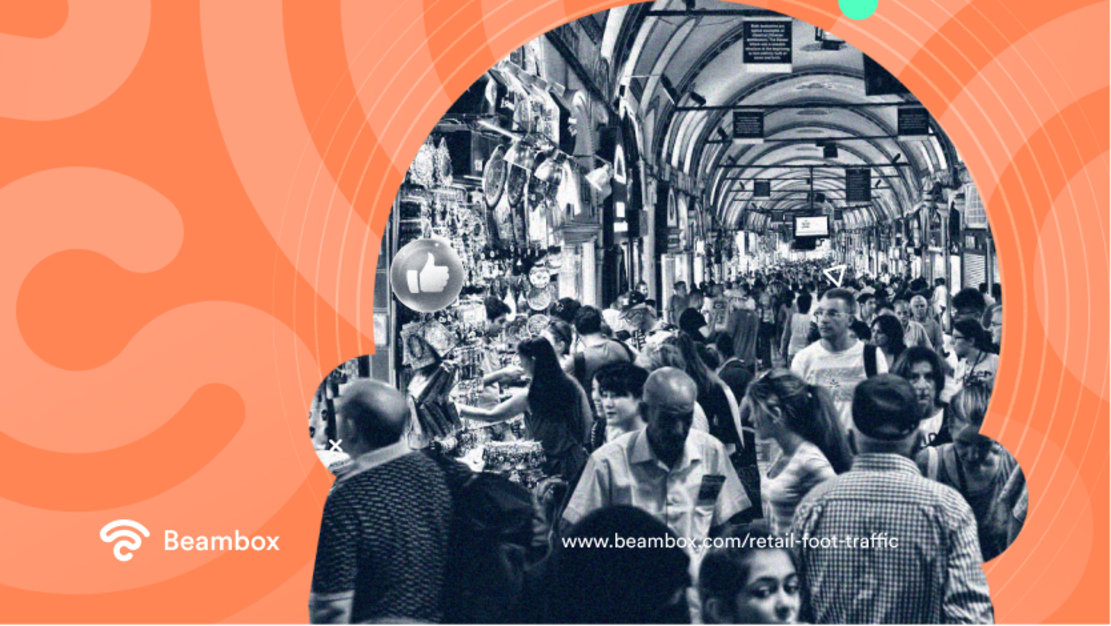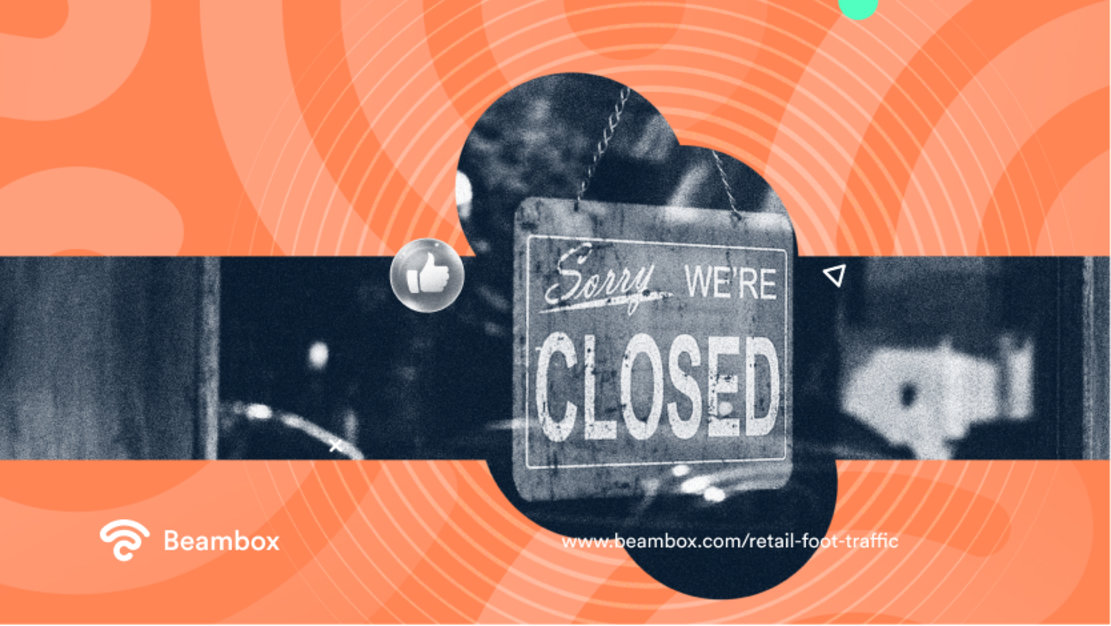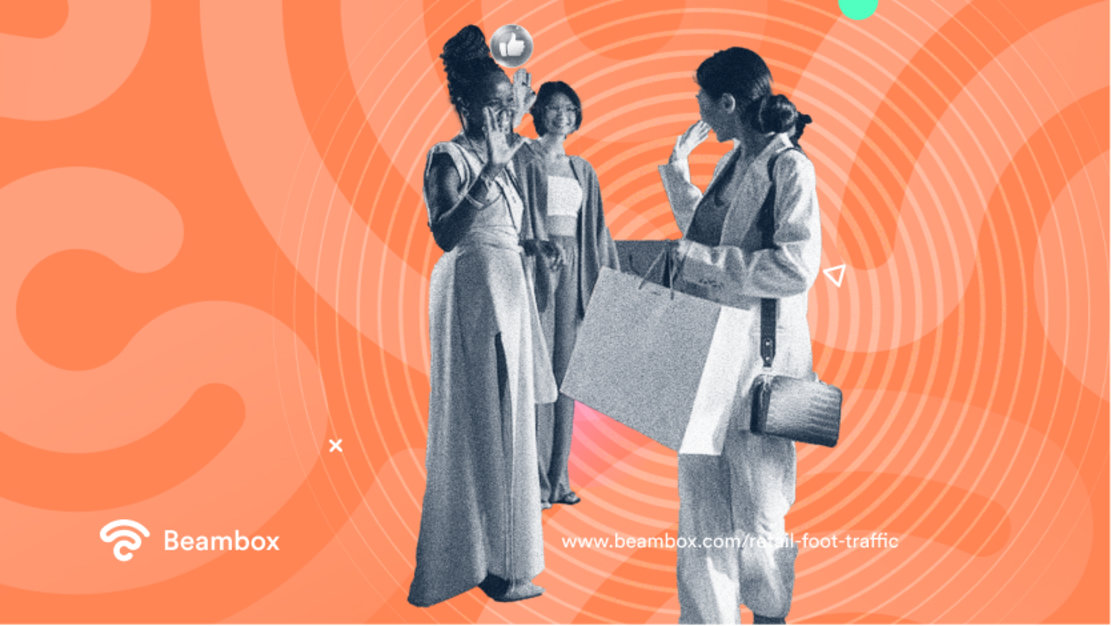Retail Foot Traffic—6 Ways To Increase Store Visits
With the advance of online shopping and technology, do you ever wonder why brick-and-mortar stores still thrive? Some would think that retail foot traffic may have ended with the pandemic. But here we are, flocking to malls and shopping centers once the restrictions slacked down.
If you are a store owner, you probably wonder: How can I herd the crowd to my place?
What you need is to understand foot traffic and harness its powers. We know foot traffic is the number of people who enter a particular location. Therefore, retail foot traffic is the number of people visiting a physical store.
This metric is crucial to retailers, as it can directly impact store sales and revenue. Typically, people consider high customer traffic as a good sign. It often translates to higher sales and more opportunities for customer engagement. However, there are a variety of factors that can influence in-store foot traffic levels.
Let’s discuss all this information. We’ll see how to increase customer traffic and learn about analytics by the time we finish the article.

Foot Traffic in Retail Stores

In recent years, e-commerce has become increasingly popular, leading to a decrease in foot traffic in retail stores. Customers can now shop online from the comfort of their own homes, making physical stores less necessary. The lockdowns and strict protocols during the pandemic magnified that trend.
But now, in-person shopping continues to pick up. Travelers and shoppers crowd malls and corridors anew. That’s why retailers are adapting by offering unique and interactive experiences to get the windfall of retail foot traffic.
Many shoppers still prefer to visit brick-and-mortar stores for several reasons.
-
One of the main reasons is the opportunity to physically see, touch and try the products before making a purchase. Customers can check the products before buying, avoiding the potential disappointment of receiving an unwanted item.
-
In-store shopping offers instant gratification and the ability to take the product home immediately. It removes the anxiety of waiting and the fear of receiving damaged or unwanted goods.
-
In-store shopping provides personalized advice from store associates. This interaction can be helpful, particularly for complex purchases like electronics or appliances.
-
Brick-and-mortar stores often have a more comprehensive selection and variety of products than online ones. Customers can often find unique or hard-to-find items that are not available online.
-
Lastly, some enjoy browsing and shopping in physical stores, especially with others. They find it to be a more social and enjoyable experience compared to the solitary experience of online shopping.
Keeping this information in mind can help retailers create ways to increase customer visits to their physical stores. We will discuss these ways below.
But first, let us consider current trends affecting retail foot traffic.

Understanding Retail Foot Traffic Trends
Over the years, the retail industry has seen significant shifts in retail foot traffic trends. Factors such as the rise of e-commerce, changes in consumer behavior, and technological advancements affect how retail stores perform.
-
E-commerce: In-store visits have declined with the rise of online shopping. E-commerce provides convenient, at-home purchasing preferred by many customers.
-
Omnichannel retailing: This trend allows retailers to use multiple channels to reach customers. including physical, online, and mobile stores. Almost 50% of e-commerce executives consider omnichannel strategy as important.
-
Technology: Mobile apps and augmented reality improve the shopping experience for many and increase foot traffic. Retailers use technology to understand customers and enhance in-store experiences.
-
Temporary closures: The COVID-19 pandemic significantly impacted retail foot traffic trends with temporary closures of retail stores and online shopping. However, the world has adjusted to a new normal, and retailers welcome customers back for positive shopping experiences.
Retail foot traffic constantly evolves, and retailers must stay current on the latest trends to remain competitive. But retailers can continue to thrive in an ever-changing retail landscape. They can do so by adopting omnichannel strategies, utilizing technology, and adapting to changing consumer behavior.

How To Increase Foot Traffic in a Retail Store–6 Easy Ways
It is important for business owners to know how to increase foot traffic in a retail store. It drives sales and builds brand awareness. There are several ways retailers can attract more customers to their stores.
As promised above, here is a discussion of those ways.
-
Offer Exclusive Promotions: Retailers can create exclusive promotions and deals to attract customers. Events that drive excitement include discounts, buy-one-get-one-free offers, and promotions with limited durations. They promote the events through email marketing and social media marketing.
-
Improve Store Environment: There are more feasible options than relocating. Retailers can improve the shopping experience by enhancing the store environment. Better lighting, signs, innovative displays, and amenities like seating and refreshments can bring wonders. High-traffic locations like shopping malls or busy streets benefit from nearby retail foot traffic.
-
Offer In-store Events: Retailers can attract customers and build their brand by hosting in-store events. These events can be product demos, workshops, and book signings. These events can help create a buzz and drive customer visits to the store.
-
Partner with Local Businesses: Retailers can partner with other local businesses to cross-promote each other’s products and services. This marketing venture can include co-hosting events, joint promotions, and cross-marketing on social media.
-
Use Digital Marketing: Retailers can use digital marketing to reach a wider audience and drive foot traffic to their stores. They can target local customers through geofencing and location-based ads. They can also engage with customers on social media with promotions and events.
-
Provide Excellent Customer Service: Retailers can differentiate themselves by providing exceptional customer service. Excellent customer service can drive customer traffic. This strategy includes welcoming customers, providing product advice, and efficiently resolving issues.
By combining these methods, retailers can bring an increase in foot traffic and foster loyalty, boosting sales and securing success.

Retail Foot Traffic Analysis–How To Do It?
Retail foot traffic analysis measures the number of people visiting a physical store. Foot traffic analysis provides customer insights for optimization in physical stores. Visit-based marketing allows retailers to identify trends, make informed decisions, and improve customer experiences.
Let’s look at some methods retailers use for conducting foot traffic analysis.
-
Foot traffic monitoring tools: One standard method is to use tools that track customer movement and behavior within the store. Foot traffic analysis provides store entry, duration, and area data. This information can help retailers optimize store layouts, product displays, and staffing levels.
-
Customer tracking systems: Another method is to use retail foot traffic statistics from customer tracking systems, such as loyalty programs and credit card transactions. This data provides more details into customer demographics, behavior, and spending, helping retailers tailor marketing efforts.
-
Surveys and focus groups: Customers can participate in foot traffic analysis through surveys or focus groups. Conducting this analysis through surveys or focus groups provides qualitative insights to enhance the shopping experience.
As we can see, retail foot traffic analysis is a valuable tool for business owners. Combining in-store analytics, customer tracking, and surveys helps retailers understand customers and make informed decisions.

6 Important Metrics for Retail Foot Traffic Analytics
There are several important retail foot traffic metrics that store owners must understand clearly.
-
Store Visits: These metric gauges store traffic and provide a good indication of the store’s popularity. Retailers monitor store visits to spot trends and make data-driven decisions on store hours, staffing, and marketing ventures.
-
Average Dwell Time: Retailers use average dwell time to optimize retail store layouts and product displays. Doing so encourages longer stays and more purchases. This metric calculates the average duration of customer visits to the store.
-
Conversion Rate: This is the number of customers who make a purchase in relation to the number of visitors to the store. Retailers use this information to identify areas for improvement in their sales processes. Optimizing window display design and providing better customer service are some of them.
-
Repeat Visits: This measures the number of customers who return to the store after their first visit. Retailers focus on visit-based marketing to encourage return visits and impact store sales.
-
Customer Demographics: This metric shows the demographics of store visitors, including age, gender, and income. Retailers use this information to tailor their marketing efforts and product offerings to specific customer segments.
-
Customer Feedback: Customer feedback on their shopping experience is essential. Get reviews from customers. Retailers use this information to find ways to improve operations, like improving the store environment and customer service.
These are some of the most important metrics for retail foot traffic analytics. Regular tracking and analysis of these metrics provide deeper customer insights. Data-driven decisions improve average foot traffic levels and shopping experience.
5 Tools for Retail Foot Traffic Analytics
There are tools for measuring and analyzing customer behavior in physical stores, helping retailers understand foot traffic. These tools can provide valuable insights into customer behavior and help retailers optimize their operations.
-
In-store Analytics Tools: These tools track customer movement and behavior within the store. They gather data on store traffic, dwell time, and in-store traffic patterns using sensors, cameras, and other technology.
-
Customer Tracking Systems: These systems use loyalty programs and credit card data. They are used to provide insights into customer demographics, purchase behavior, and spending. Retailers can use this information to tailor their marketing ventures and promotional efforts to specific customer segments.
-
Surveys and Focus Groups: Retailers can survey or hold focus groups to get customer feedback on their shopping experience. This feedback produces valuable customer attitudes and preferences insights, improving the shopping experience.
-
Heat Mapping Tools: These tools create visual representations of in-store customer behavior. They make use of data from in-store analytics and customer tracking systems. This information helps retailers find the store’s busiest areas and make data-driven decisions on store design and product displays.
-
Traffic Tracking Software: This software can help retailers collect, analyze, and visualize data from the above sources.
These are some of the tools available for retail foot traffic analytics. Retailers can use a combination of these tools to understand their customers better. Using these tools, they can also make informed decisions to drive customer traffic and improve the overall shopping experience.
Integrating Retail Foot Trafic Analysis With Marketing Software
As you can see, retail foot traffic analysis is a powerful tool for building your brand. You can boost this further by integrating marketing software that fits your needs.
Marketing software can utilize the data collected from foot traffic analytics to target and personalize marketing campaigns.
Marketing campaigns targeting specific customers help improve overall customer experience and drive sales.
Additionally, marketing software can provide additional insights and analysis. Customer demographics and purchasing behavior are crucial to informed decisions and optimized operations.
Integrating marketing software with retail foot traffic analysis improves coherence and drives long-term results, enhancing overall marketing effectiveness.
Beambox’s digital marketing solution can help you get the most out of reviews, contact lists, and customer information. Along with dwell time analytics, it can help you plan, monitor, and redirect your marketing efforts to grow your business.
Learn more about Beambox and start growing your business now.
Get Started With Free WiFi Marketing
Beambox helps businesses like yours grow with data capture, marketing automation and reputation management.
Sign up for 30 days free


